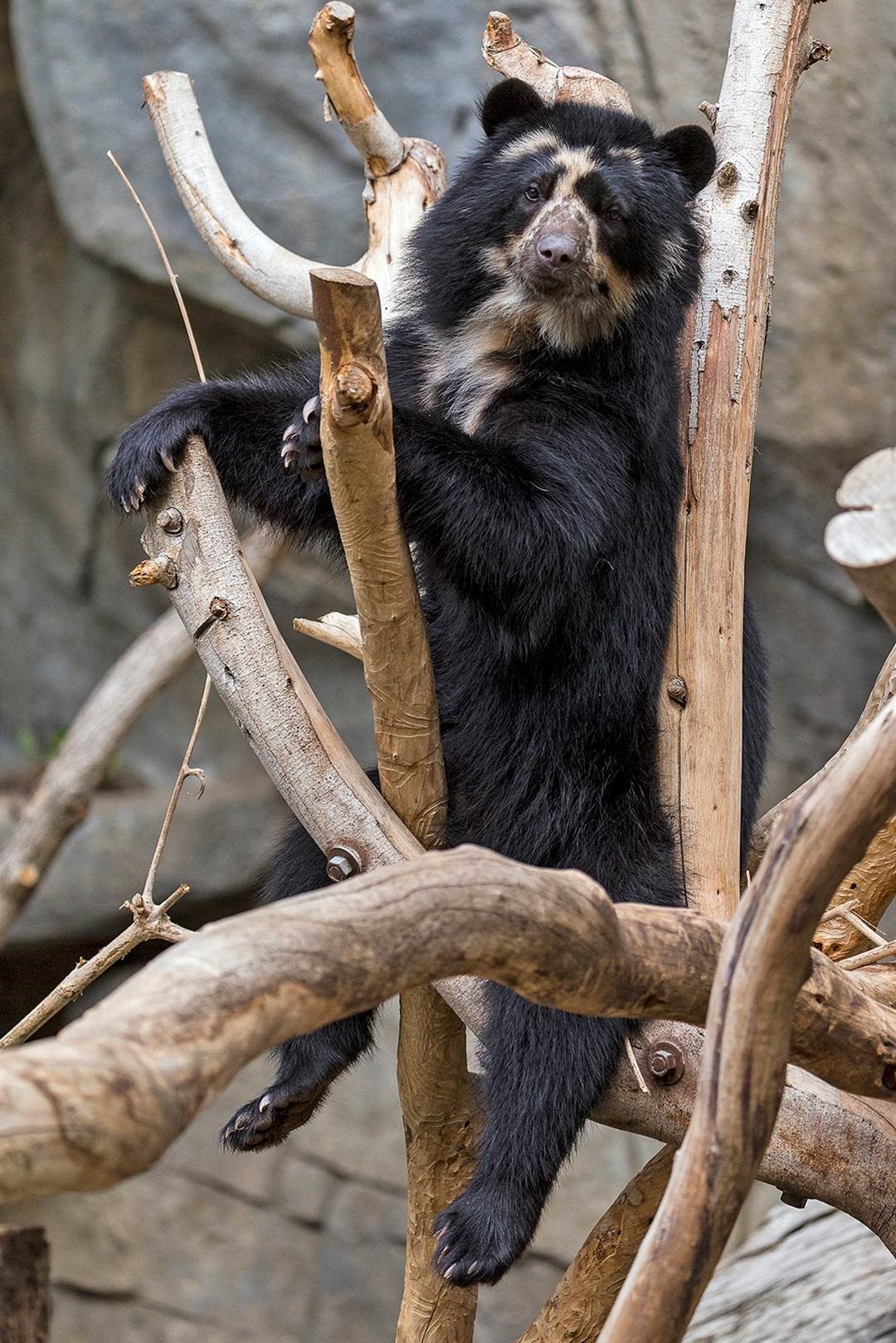
San Diego Zoo Global Celebrates Birth of Andean Bear Cub
New Cub Will Allow Researchers to Study Maternal Behavior of Elusive Bear Species
San Diego Zoo Global is celebrating the birth of an Andean bear cub, born at the San Diego Zoo in the early morning hours of Jan. 8, 2020 to first-time mother Alba and sire, Turbo. Mother and cub are being closely monitored by animal care staff via a closed-circuit video camera, allowing Alba to care for her cub without interruption. The mortality rate for Andean bear cubs in their first month is high so the animal care staff is cautiously optimistic for the cubs’ long-term survival. At just 7 days old, the cub—whose sex is yet to be determined—appears to be thriving.
“We are overjoyed about the birth of Alba’s first cub,” stated Chris Hamlin, animal care manager, San Diego Zoo. “Alba is showing all the appropriate behaviors of a good mother, being very attentive to her newborn. We are so impressed with how well she is handling motherhood.”
The birth of this cub is of great significance to conservation research. It will allow San Diego Zoo Global researchers and animal care staff the rare opportunity to learn about mother and cub interaction, and cub development. Very little is known about Andean bears in their native habitat. They are very shy and tend to avoid humans, making them hard for researchers to study.
“The Andean forests where we work are so rugged and dense that it will be a long time before we can study the maternal behavior of wild bears there,” said Russ Van Horn, scientist, Population Sustainability, San Diego Zoo Global and co-chair of the International Union for Conservation of Nature’s Andean Bear Expert Team. “Alba's behavior and her cub's development will suggest how closely, and for how long, wild mothers and cubs may be linked to birth dens, where we think they’re sensitive to disturbance by humans.”
San Diego Zoo Global has been studying Andean bears for over 12 years, and since 2008 has worked with various partners to research and conserve bears in Peru, recently in southeast Peru in and near Manu National Park. The goal of San Diego Zoo Global’s Andean Bear Conservation Program is to help increase scientific knowledge about these bears to advance their conservation, to train and mentor Peruvian conservationists and to promote an understanding that the bears are worthy and integral parts of a healthy ecosystem.
Only a few zoos in the United States house Andean bears. The San Diego Zoo paired Alba and Turbo as part of the Species Survival Plan (SSP), a cooperative breeding program designed to enhance the genetic viability and demographic stability of animal populations in zoos and aquariums accredited by the Association of Zoos and Aquariums (AZA).
Andean bears are also called spectacled bears, named for the unique rings of white or light fur around their eyes. It is the last short-faced bear and the only bear species native to South America. They are found in the Andes from Venezuela to Bolivia, living primarily in dense forests, but also in grasslands and scrublands.
The Andean bear is listed as Vulnerable on the IUCN Red List of Threatened Species, primarily due to habitat loss. Andean bear habitat is disappearing at a rate of about 2 to 4 percent per year, as it is being destroyed for mining operations, farming and timber harvest. The construction of new roads also fragments bear habitat. In addition, climate change is altering the bear’s habitat in unpredictable ways. Andean bears are considered an umbrella species in the region, meaning that conservation programs aimed at protecting Andean bears will indirectly benefit other species in the Andes Mountains. It is estimated there are only 2,500 to 10,000 adults remaining in their native habitat.
Andean bears were first cared for at the San Diego Zoo in 1938, and since then, nine cubs have been born. This is the first Andean bear cub born at the San Diego Zoo since 1993. Cubs are born with their eyes closed and are completely dependent on their mother. In their native habitat, it is believed the cubs first leave the safety of their dens at around 3 months of age, and stay with their mothers until they are at least 1 year old, before venturing out on their own. While Alba has access to her outdoor habitat, Zoo visitors most likely will not be able to see the cub for another couple of months, as Alba continues to care for and bond with her cub in her den.














